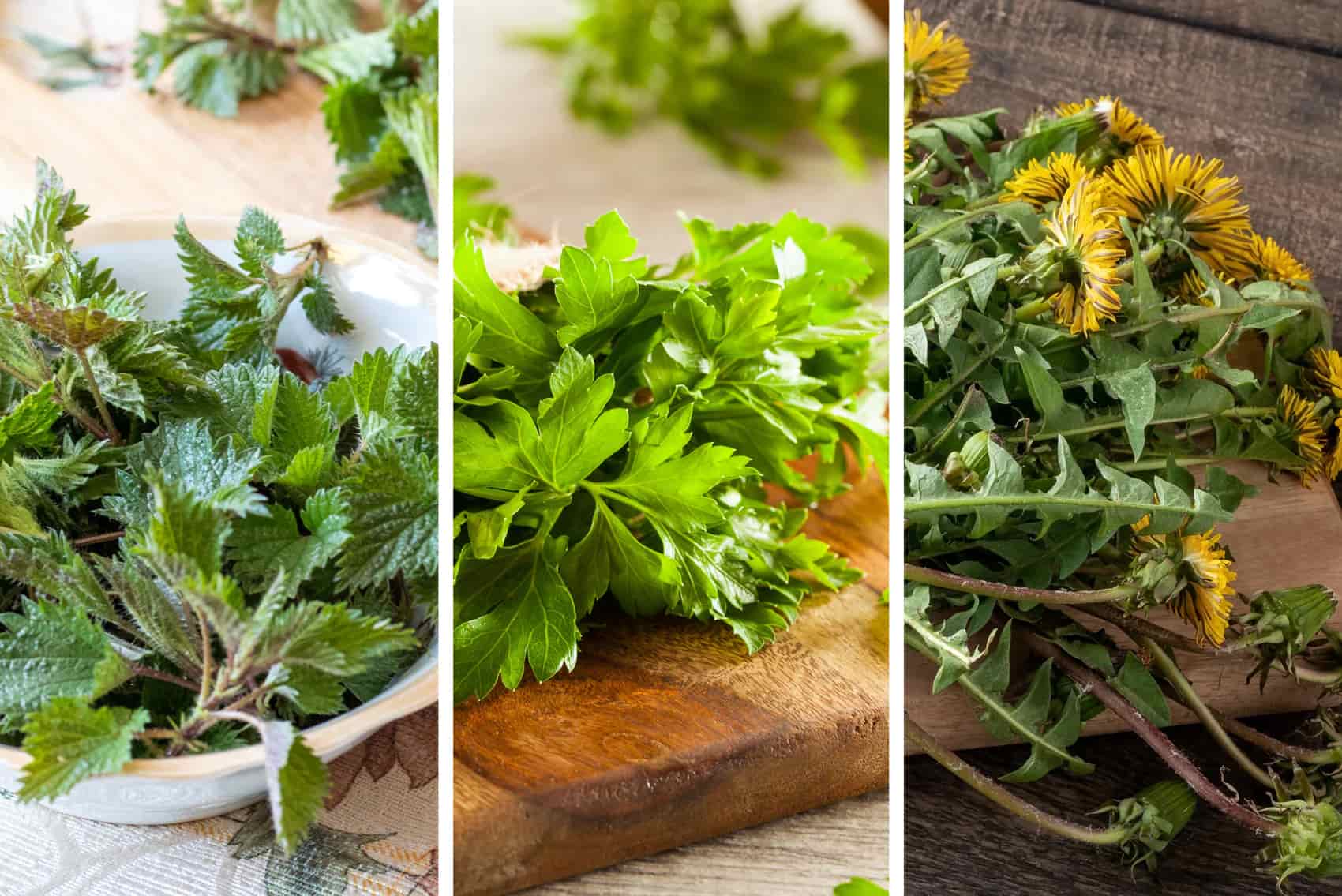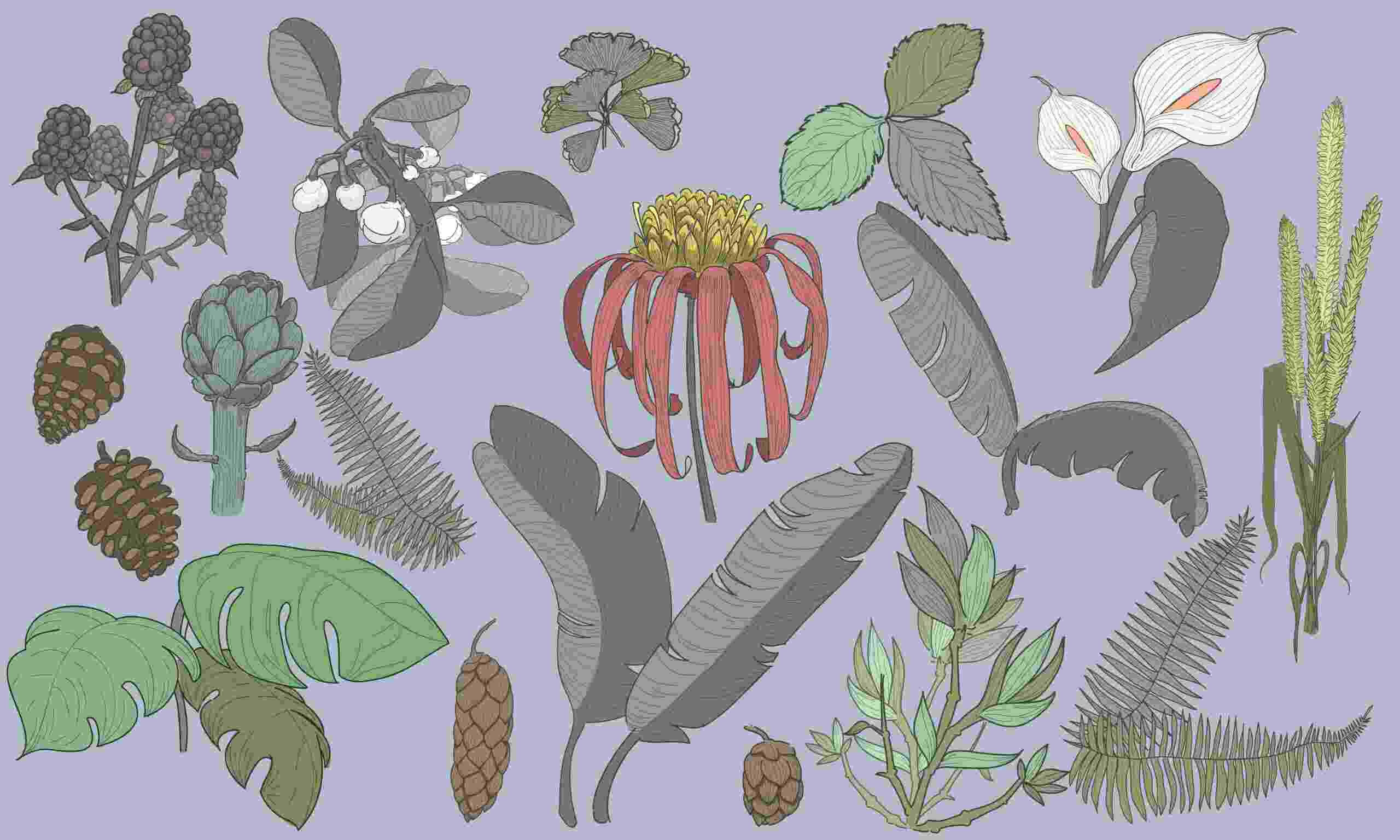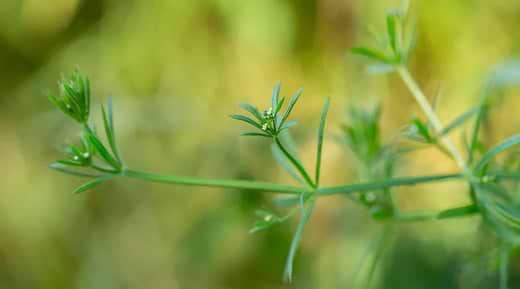Cleavers is a sticky little friend of ours that got its common name because of its ability to "cleave" onto other plants to gain height and reach the sun, almost in a vine-like matter. While "cleave" usually refers to splitting or cutting something, cleave in Old English actually meant to "stick together." Cleavers' hook-like leaves are not the only sticky part of this plant. The seeds, similar to Thistle or Burdock seeds, are surrounded by little burrs with a Velcro-like texture. These burrs stick to animals and use them as a transportation system to disperse the seeds. Cleavers likes to grow in dense forested areas with shady, wooded grounds. If Cleavers do not latch on to other plants, it tends to creep along the forest floor. Cleavers especially like to grow near Douglas Fir and you can often find these two side by side. Cleavers has 6-8 leaves around its square stem. You can identify the square stem by rolling it between your fingers, feeling for edges.
Cleavers latin name is Galium aparine. There are several Galium species, but Galium generally refers to the Bed Straw family. Here at WishGarden, we prefer aparine because it is the most juicy and robust. When you press or bruise Cleavers it has a very light fragrance that is almost reminiscent of rose. We also choose the aparine (Cleavers) variety because several of the other members of the Galium genus are endangered and over harvested. The word Galium comes from the word Gala, the Greek word for milk. The leaves of Cleavers were traditionally used to curdle milk and were stuck together to create somewhat of a "filter" for cheese making. In fact, the word aparine means "to stick." Another word derived from aparine is the Spanish word aprender, which means to learn. To aprender or "to learn" something is to have it "stick" to the mind! Just like the seed burrs stick to animal's coats.
Cleavers is a part of the Rubiaceae family (or Madder Family) which is the same family as Coffee. The seeds of Cleavers actually contain a small amount of caffeic acids and can be roasted and used as a coffee substitute. Although the most common part of Cleavers is the above ground stems and leaves, the seeds and root have uses as well. This family has been traditionally used throughout Africa, Asia, the Mediterranean and the Americas as a red dye. You can use the root as almost a "crayon" (a perfect activity for the kiddos - harvest, then draw!).

Cleavers — also known as Cleavers Wort (Wort just means "weed" or useful plant), Hitchhikers, Galion, Galberions, Aparine, Goosegrass, Clites, Goslingweed — is a "cooling" herb. It is indicated for any hot or irritated tissue state (great as a tea if you are feeling hot and irritated too!) In Greek medicine, Cleavers is primarily used to support balanced body temperature. This is due to the tannins, trace minerals, and organic acids. Cleavers is also an alterative herb. An alterative is an herb that alters in nutrients and alters out waste, therefore serve as a great means for detox support. Alteratives can also be described as "cleansing tonics" or "restoratives". Alteratives are best taken long term to help change the state of your tissues to enhance their vitality. They give your tissues the strength and power to fight off maladies and heal properly. Certain alteratives have different affinities for different tissue types. For example, Mullein for the lungs, calendula for the skin, or Burdock root for the liver. Cleavers has an affinity for the lymph (clears excess, stagnant fluids in the body), bladder, and skin. Cleavers is especially beneficial for bladder or urinary health because it can actually cool down the fluids to provide relief. Cleavers can also be a lenitive urinary demulcent, meaning it can moisturize and soothe the urinary tract and gently promotes urination. Another example of a lenitive urinary demulcent is Cornsilk and Marshmallow. Cleavers and Cornsilk are two of the superhero herbs found in our Urinary Strength formula.
Alteratives also work great when taken long term to restore an unbalanced metabolism (they are often referred to as "metabolic" tonics). These herbs are generally high in magnesium, calcium, and potassium. Besides being high in these minerals, Cleavers is also a great source of chlorophyll, which is high in vitamins A, C, E, and K. When people are deficient in these minerals and vitamins, they tend to have metabolic issues. This reiterates Cleavers' alterative mechanism of pulling nutrients into the tissues and promoting the removal toxins and waste. The high mineral content of Cleavers also promotes strong immunity, which is why it's featured in our Kick-Ass Immune formula.
Cleavers is one of the first greens to come up in the spring, which is the best time to use it as food. Once Cleavers grows and develops its "hooks" on its leaves, it becomes less palatable. Once the Cleavers plant has developed, you can use it as a pressed juice, tea, or tincture. If you are making tea, make sure the water doesn't get too hot! Hot water can ruin some of the constituents of the plant. You can press it as a juice at any time (a great way to get a quick boost of chlorophyll). With the baby greens you can make pesto, chimichurri, as part of a quiche, or mixed in with your salad.
Once again a plant friend considered a "weed" has endless benefits. Search for Cleavers next time you're exploring the forest or it can be easily found in our blends: Lymph Mover, Respiratory Strength, Kidney Strength Daily Support, Deep Cleanse Reset & Flourish, Daily Immune Builder, or Urinary Strength Active Support!
Gem Boehm-Reifenkugel (She/Her) is an herbalist on our customer journey and social outreach team. Gem has been self-studying nutrition for many years and recently received a certificate in medical herbalism from Colorado School of Clinical Herbalism. She strives to make herbs accessible to everyone and spread knowledge of our powerful plant allies to the community.
For educational purposes only. This information has not been evaluated by the Food and Drug Administration. This information is not intended to diagnose, treat, cure, or prevent any disease, or sell any product.
Recommended Products
Further Reading














